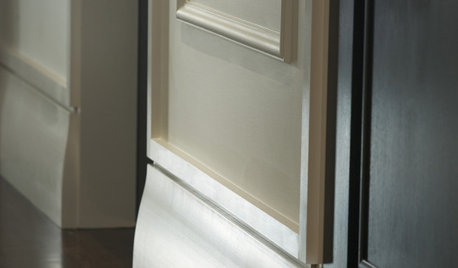Crown Gall Questions
pat_bamaz7
7 years ago
Featured Answer
Sort by:Oldest
Comments (20)
Moses, Pittsburgh, W. PA., zone 5/6, USA
7 years agopat_bamaz7 thanked Moses, Pittsburgh, W. PA., zone 5/6, USARelated Discussions
Crown Gall
Comments (4)Karl is absolutely right on here. This is an unfortunate event and is not infectuous to any other roses in your garden unless they get injured and allow this particular bacteria to enter that wound. I have successfully replanted roses in holes where I had a previous gall infection without incident. I did dispose of all the soil I could when getting rid of an infected rose, replacing it with a mix of good garden soil and native soil in the hole. I have heard that some even treat the spot with a bleach solution, but I think that is a bit extreme and might end up doing more damage to other beneficial organisms in the soil that are necessary for growth of a new rose. John...See MoreCrown Gall question
Comments (9)But there you are, Kim -- Over the years, I have received FOUR plants with gall. One was a potted Austin rose, bought from Sassafrass at a ridiculous price (remember Sassafrass?). The other THREE galled plants all came from Heirloom. The two virused Dark Ladies were also identically galled. So was the Souv. du Docteur Jamain. None of them actually got roots into the ground, fortunately, but it's possible I may have spread it, pruning. So, treating things with gall and then selling plants from their infected mother stock doesn't seem to work well, IMHO. So, unless it was the ONLY one in the world, I'd STILL dump it. Because it is a FAR worse thing to have in the garden than RMV. We found a remarkably beautiful Maman (or White Maman) Cochet in the Sierra Foothills. Did not collect from it, because it was so badly galled. And that plant is gone, now. Jeri...See MoreCrown gall plant disposal question...
Comments (8)Kimmsr, I read the article and it specifically talks about trash burning. The paragraph that talks about wood burning actually states that clean dry wood produces little pollution. One should never burn trash, but clean wood produces less pollution then burning oil. The particulate matter in wood smoke is heavy and quickly settles to the ground. Wood also produces the same pollutants rotting as it does burning. True in some circumstances wood burning becomes a problem when air is trapped, as in Denver. Burning oil produces lighter chemicals that escape the trap and become someone else,s problem. Burning a couple of Wisteria in a hot fire will contribute little to pollution, so pick up four cans that should make up for it....See MoreCrown Gall - any other options?
Comments (10)Mine is an own root rose I got as a band in 2015 I think. I have not seen this before here. I understand some rose purveyors have sent infected plants and other people have the bacteria in their soil. I do hear you have to replace the soil where an infected plant has grown if you take it out. In theory, an own root potted plant might have less scrapes and wounds that the bacterium can enter. Some grafted and bare root do arrive pretty beat up. I remember reading on the forum that some people have gall on a rose that looks fine otherwise and if it was still attractive they just leave it. I have never read of it spreading all over from one infected plant. I have read of some commercial growers having their fields having a widespread infection with contaminated soil, sadly....See Morepat_bamaz7
7 years agonanadollZ7 SWIdaho
7 years agoMoses, Pittsburgh, W. PA., zone 5/6, USA
7 years agoroseseek
7 years agopat_bamaz7
7 years agoroseseek
7 years agohoovb zone 9 sunset 23
7 years agopat_bamaz7
7 years agoR pnwz8a
3 years agobart bart
3 years agoR pnwz8a
3 years agobart bart
3 years ago
Related Stories


REMODELING GUIDESCrown Molding: Is It Right for Your Home?
See how to find the right trim for the height of your ceilings and style of your room
Full Story
REMODELING GUIDESHow to Size Interior Trim for a Finished Look
There's an art to striking an appealing balance of sizes for baseboards, crown moldings and other millwork. An architect shares his secrets
Full Story
BEDROOMSHouzz Quiz: What Color Should You Paint Your Bedroom Walls?
Cool and soothing, or warm and spicy? Answer these questions and learn what hue is right for you
Full Story
KITCHEN CABINETSCabinets 101: How to Work With Cabinet Designers and Cabinetmakers
Understand your vision and ask the right questions to get your dream cabinets
Full Story
REMODELING GUIDESMust-See Mock-ups for Your Remodel
Avoid 'oops' and 'oh, no' with real-life tryouts of any design elements in question
Full Story
ARCHITECTURERoots of Style: Where Did Your House Get Its Look?
Explore the role of architectural fashions in current designs through 5 home styles that bridge past and present
Full Story
DECORATING GUIDESFind Your Design Style
Choose One of These 8 Home Photos to Find Your Signature Look
Full Story
TRIMInterior Trim: 8 Must-Know Elements
Softening transitions and creating a finished look, interior trim for walls, windows and doors comes in many more options than you may know
Full Story







stillanntn6b